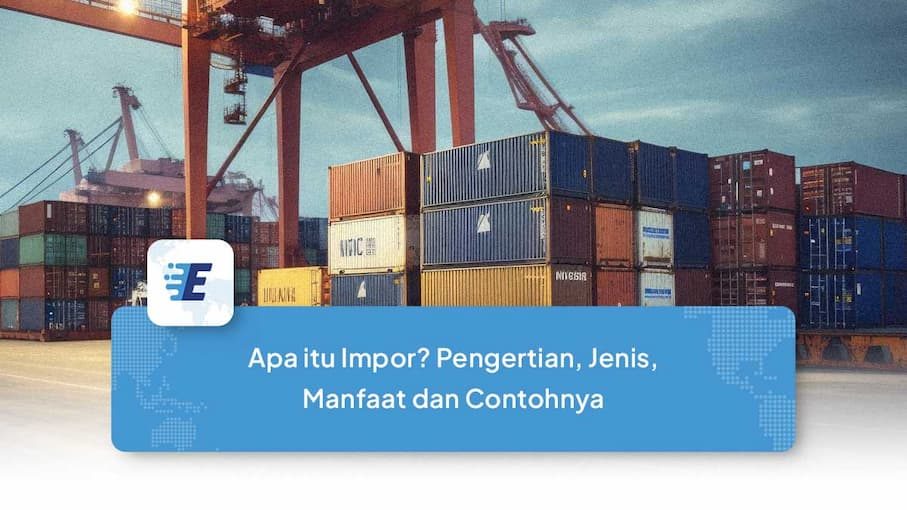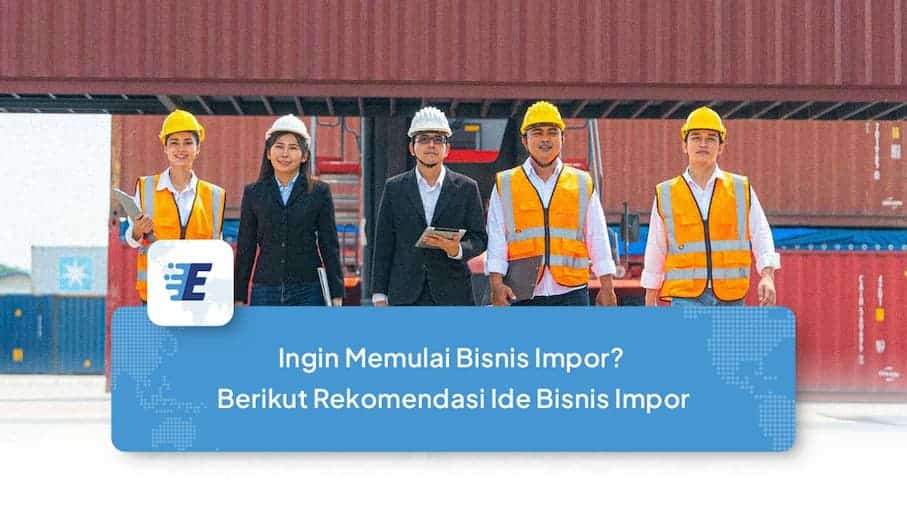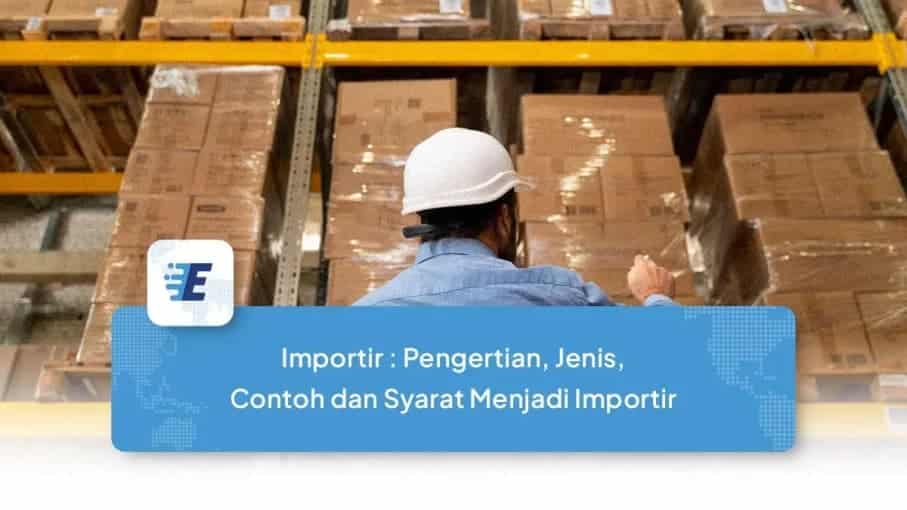Last updated on September 2nd, 2025 at 01:35 pm
In the era of globalization and economic interconnectedness, imported have become an integral component of international trade activities that impact a country's economy. This article will explain the concept of imports, their benefits, types of imports, the difference between imports and exports, import purposes, and provide examples of imports.
Definition of Import
List of contents
- 1 Definition of Import
- 2 The benefits of imports
- 3 Types of Imports
- 4 Differences Between Imports and Exports
- 5 Purpose of Import
- 6 Examples of Imports
- 7 Imported Commodities
- 8 What are Imported Commodities?
- 9 What are the types of imported commodities?
- 10 Trading System of Imported Commodities in Indonesia
Importing is an economic activity involving the introduction of goods or services from a foreign country into the domestic market of a nation. In the context of globalization, imports are integral to international trade. This article will explain the definition of imports, their benefits, various types of imports, differences from exports, import purposes, and provide some examples of imports.
The benefits of imports
Importing have several economic benefits, such as expanding consumer choices, helping to meet domestic needs, and promoting healthy price competition.
Types of Imports
- Imports for domestic use: This type of import includes goods or services imported for use and consumption within the country. An example is the importation of crude oil for processing into fuel domestically.
- Temporary imports: Temporary imports involve goods imported for temporary use and will be re-exported after use. An example of temporary importation is equipment used in international exhibitions.
- Transit or transshipment imports: This type of import involves goods imported with the intention of being forwarded to another country without being stored domestically. An example of transit imports is the importation of raw materials used in the production of goods intended for export.
- Imports for stockpiling: Imports for stockpiling involve importing goods for storage and future use. Typically, this relates to strategic stockpiles or food security.
- Imports for re-export: These goods are imported with the intention of being re-exported to another country without being used domestically. Typically, these goods undergo processing or alteration before being re-exported.
These types of imports reflect the diversity of international trade activities and the purposes for which imported goods are used.
Differences Between Imports and Exports
The fundamental difference between import and export is the direction of trade. Importing involves bringing goods or services from abroad into the domestic market of a country, whereas exporting involves selling goods or services from the domestic market to another country.
This difference creates significant impacts in the context of international trade and a country's economy. Importing helps fulfill domestic needs that cannot be efficiently or sufficiently produced locally, while exporting promotes economic growth, creates jobs, and generates foreign exchange earnings.
Both activities play crucial roles in the global economy, and a good understanding of their differences and implications is key to designing effective trade and economic policies.
Purpose of Import
There are three main purposes of import, as follows:
- Meeting Domestic Needs: One of the main purposes of imports is to meet the demand for goods and services domestically that cannot be efficiently or sufficiently produced. This ensures that domestic consumers have access to a variety of products that are not produced locally or are insufficient.
- Strengthening Balance of Payments: Imports can help balance a country's balance of payments. In some cases, a country may import more than it exports to maintain balance in its balance of payments. This also allows the country to gain access to foreign capital and technology.
- Reducing Outflow of Foreign Exchange: By importing necessary goods, a country can reduce its outflow of foreign exchange. This helps maintain foreign exchange reserves and avoid economic pressure that may arise from a shortage of foreign exchange.
Examples of Imports
Example imported Including importing crude oil for the oil industry, importing ready-made clothing from foreign manufacturers, importing high-tech industrial machinery, and many more.
Imported Commodities
Imported commodities are a crucial component of Indonesia's economy with significant impacts on international trade. In this article, we will discuss the definition, types, and trading systems of imported commodities in Indonesia, and how this affects the country's economic dynamics.
What are Imported Commodities?
Imports refer to goods or commodities purchased from abroad. In this context, there are two categories of commodities: export commodities and imported.
Export commodities refer to goods or products produced domestically and sold to other countries. On the other hand, Imported commodities typically involve items that are limited or unavailable domestically, necessitating purchases from abroad.
Indonesia is one of the countries that imports a large quantity, despite having abundant natural resources. The existence of these imports is often necessary to meet the basic needs of the population.
What are the types of imported commodities?
There are several types of imported commodities in Indonesia. Here are some types of imported commodities in Indonesia:
- Consumer Goods: These are products directly consumed by individuals or households. Examples include clothing, packaged food and beverages, electronics, cosmetics, fuel, and other consumer products.
- Intermediate Goods: These are materials used in the production process to create finished products. Examples of intermediate goods include metals, chemicals, and ingredients for the food industry.
- Capital Goods: These are goods used in the production of goods and services. Examples include industrial machinery, medical equipment, commercial vehicles, and computers used in businesses.
- Non-Oil and Gas Commodities: This includes various types of goods not derived from the oil and gas sector. Examples include agricultural products such as wheat, coffee beans, or palm oil, as well as other products like steel, wood, or textiles.
When a country imports these commodities, they can meet domestic needs that cannot be efficiently produced or with the same quality.
Trading System of Imported Commodities in Indonesia
The trading system of imported commodities in Indonesia involves purchasing necessary goods from abroad. Typically, countries import goods due to reasons such as better quality or limited availability domestically.
The rules governing import commodity trading transactions serve as guidelines in international business. This system involves the concepts of demand and supply, where demand refers to goods purchased from abroad, while supply refers to goods sold to foreign countries.
The constantly changing global market influences price fluctuations in the import commodity trading system. This volatile nature often characterizes the system.
Price changes can be caused by various factors, including government policies, natural disasters, economic instability, inflation, weather conditions, and uncertainties in production.
Price fluctuations are a major issue faced by traders and buyers of imported commodities, and these factors also affect the level of demand and supply. The price of goods is determined by several factors, including demand, supply, production availability, the number of competitors in the market, and market expectations.
With a strong understanding of imported commodities, their types, and the trading system in Indonesia, you can become a smart player in the global market. Don't hesitate to explore import opportunities that can advance your business.
Want to purchase goods for your business more easily and efficiently? Just use Easylink! Easylink can simplify your international money transfers and optimize the process. import business. You. Find the right solution and make your business successful in import commodity trading with Easylink.





